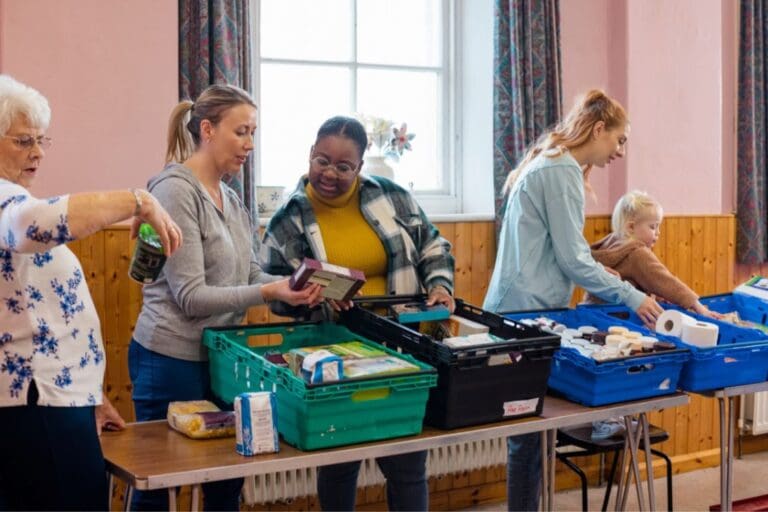Finding and keeping trustees is a vital but demanding task for voluntary and community organisations. Put simply, there are always more Trustee vacancies than there are available people to fill these extremely important posts.
Some of your trustees may have left or are intending to leave soon. Or maybe you feel your board needs reinvigorating. This should be seen as an opportunity to bring in new skills, experiences, and perspectives to your board.
Follow these steps to build a brilliant Board.
Step 1: Prepare your existing Board
As a committee, ask yourselves the following questions: • Are we ready and willing to involve new people? • Are we working well together? Do we need to deal with any issues or tensions before someone new joins the board? • Would we be willing to change where and when we meet? • Are we open to different ideas and fresh perspectives?
It is important to address any of these issues before you start recruiting. It is also important to check your governing document to see if there are any restrictions on what you can and cannot do. There may be a limit on the number of trustees you can have or set terms of office that you need to consider when recruiting. Also, ensure any relevant policies and procedures are up to date so that you are in a good position to take on new committee members.
Consider carrying out a skills audit-what experience and skills do you have on the board already and what do you need? If there is a gap, the new trustee should ideally fill this.
Step 2: Decide who you are looking for
Remember, there is no such thing as the ‘ideal board’: the mix of people your charity needs will be specific to your organisation and will change over time. As a starting point, think about the following:
- What skills and experience would you like to find (based on your skills audit)?
- Are you looking for someone with specific knowledge such as marketing, finance or planning?
- Are you looking for someone with lived experience?
- In the future, what challenges or issues might your organisation be facing? What kind of person will help you navigate these?
- This is in terms of both protected characteristics (e.g. race, gender, disability, sexual orientation, religion, etc.) and diversity of thought and experience. You should also think about taking stock of how diverse you are as a group of trustees and whether there are any groups of under-represented people; and whether your board reflects the people you wish to serve.
Step 3: Prepare your Advert and your Recruitment Pack
Create a comprehensive advert that includes:
- What your charity does
- The skills and experience you are looking for and why.
- Barrier removal…does a Trustee need previous Governance experience?
- What a trustee does
- What will the commitment look like?
- What are the benefits on offer, e.g. training and expenses?
- What will a trustee get out of the role, e.g. career development?
- Where are the meetings held?
- How can you find out more?
- How to apply
- Closing and interview dates. 6-8 weeks is a good timeframe.
Think about if you could consider a Video advert, an open webinar/evening to answer questions on the role or an infographic or meme to advertise the role.
Remember to develop an information pack about the role and the organisation, to give to potential trustees.
Step 4: Shortlist and Interview
When you shortlist, remember you are recruiting for potential not perfection. Ensure you use agreed criteria and even if you don’t have many applicants still shortlist otherwise you can end up with an inappropriate candidate.
At the interview, ensure it is a two-way process. You could consider sharing the questions in advance and you should think about the panel, setting and timing to ensure accessibility for all. Remember, this doesn’t need to be a formal interview-a coffee and a chat, or a video call can work if this is appropriate for your charity.
Step 5: Appointment and Induction
At appointment, you could consider recruiting two or more trustees at the same time, if appropriate. You should write to your preferred new trustee with an invitation to join the board, subject to references and attendance at a trustee meeting.
At induction, you should provide an induction pack including for example, the governing document and policies and procedures. Ensure you organise an induction meeting with the chair, another trustee and some key members of staff as well as organising the first Committee meeting. It will also be useful to assign a buddy and set up training.
Step 6: Keep up the good work
Once your new trustee has been inducted, it is important to continue to invest and engage in your trustees (both new and existing) development and contribution. So, A review meeting should be planned for shortly after the new trustee starts. It will allow the new trustee to feedback on their first impressions and to ask more questions. You should also encourage all trustees to benefit from continued training and networking opportunities to help them in their roles.
Need more help?
If you would like to benefit from in-person training on this important topic, consider signing up for VODA’s free training session ‘Building a Brilliant Board’. See VODA’s Training Calendar for upcoming sessions.
If you have any further queries, VODA can offer support, advice, and training to your VCSE group. Please contact VODA’s Core Services Team by telephone on 0191 323 2040 or by email at development@voda.org.uk.





